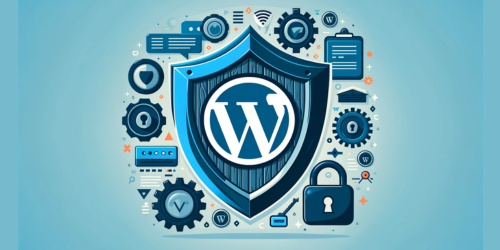In Linux, after installation, WordPress files are typically located in the /var/www/html directory, assuming a default setup with Apache as the web server.
The WordPress installation path refers to the directory where WordPress files are stored on your server. By default, this is usually /var/www/html for Apache web servers.
1. Prerequisites for Installation
Before embarking on the installation of WordPress on CentOS, a thorough preparation is crucial. This preparation involves ensuring your system meets certain requirements and configurations. Firstly, your server should be equipped with a web server, either Apache or Nginx, and it must support PHP version 5.6 or higher and MySQL/MariaDB version 5.6 or greater. These components form the backbone of your WordPress environment.
Additionally, meticulous attention should be paid to server configurations. This includes having a domain name pointing to your server’s public IP address. User permissions should be carefully managed, ensuring administrative rights are correctly assigned.
Equally important is ensuring that your firewall or SELinux settings are correctly configured to not obstruct necessary ports. For a deeper dive into these prerequisites, refer to the comprehensive guides on Apache Installation, PHP Installation, and MySQL Installation.
2. Installing Apache as a Web Server
The installation of Apache on CentOS 7 is a straightforward process. Begin by opening your terminal and inputting sudo yum -y install httpd. This command initiates the download and installation of Apache. Once installed, start Apache using sudo systemctl start httpd.
To ensure Apache starts automatically after a reboot, use the command sudo systemctl enable httpd. These steps will set up Apache as your web server, ready to serve your WordPress site. Further details on this process can be explored in the Apache HTTP Server Project.
3. Setting Up MySQL/MariaDB Database
The heart of WordPress lies in its database, and setting up MySQL or MariaDB correctly is a key step. Begin by installing MySQL or MariaDB on your CentOS server. Use sudo yum install mariadb-server mariadb for MariaDB or follow the guide for MySQL Installation if you prefer MySQL.
Once installed, start the MariaDB server with sudo systemctl start mariadb. A crucial step is securing your installation using sudo mysql_secure_installation. This command allows you to set a strong password for the root user and make other security-related adjustments, such as removing anonymous users and disallowing root login remotely.
Next, log into your MySQL/MariaDB shell and create a new database for WordPress: CREATE DATABASE wordpress;. Additionally, create a user and grant it permissions to the database: GRANT ALL ON wordpress.* TO 'wordpressuser'@'localhost' IDENTIFIED BY 'your-strong-password';. These steps not only set up the database but also ensure it is secure and ready for WordPress. For more detailed instructions, visit the MariaDB Knowledge Base.
4. Downloading and Installing WordPress
Downloading and installing WordPress on CentOS is a straightforward process. Start by navigating to your desired directory and using the wget command to download the latest version of WordPress: wget http://wordpress.org/latest.tar.gz. After downloading, extract the contents using tar -xzf latest.tar.gz. This command unpacks WordPress into your directory.
Next, move the WordPress files to your web server’s document root. For instance, sudo mv wordpress/* /var/www/html/. Here, /var/www/html/ is the Apache web server’s default directory. It’s critical to set the correct permissions for these files. Use sudo chown -R apache:apache /var/www/html/* to ensure the web server can access and modify the WordPress files. More information and variations for different setups can be found in the Wppedia.
5. Configuring Apache
Configuring Apache to serve your WordPress site involves editing the virtual host file. Start by opening the configuration file with a text editor, for example, sudo nano/etc/httpd/conf.d/yourdomain.com.conf. In this file, specify the DocumentRoot and ServerName directives to point to your WordPress directory and domain respectively.
It’s crucial to ensure the file paths and domain name are correct. After editing, restart Apache to apply the changes: sudo systemctl restart httpd.
6. Completing WordPress Installation Through Web Interface
Finalizing your WordPress installation is done through its web interface. Begin by opening a browser and navigating to your domain, where you’ll be greeted by the WordPress setup page. The setup wizard guides you through selecting a language, and then asks for database connection details. Enter the database name, user, and password that you created earlier.
Following the database setup, WordPress will prompt you to configure site settings like the site title, admin username, password, and email. Choose a secure username and password, as these credentials will be used to manage your WordPress site.
After completing these steps, WordPress will install and provide you with a login page link. Log in with your credentials to access the WordPress dashboard, where you can start customizing your site with themes and plugins. Additional help and troubleshooting tips are available in the WordPress Installation Guide.
7. FAQs
Q. How to setup WordPress website in CentOS 7?
To set up a WordPress website in CentOS 7, install Apache, MySQL/MariaDB, and PHP. Create a MySQL database for WordPress, download and extract the WordPress files to /var/www/html, configure Apache for your domain, and complete the installation through the WordPress web interface.
Q. How to setup WordPress on CentOS 8?
Setting up WordPress on CentOS 8 involves installing the LAMP stack (Linux, Apache, MySQL, and PHP), creating a MySQL database for WordPress, downloading WordPress, adjusting file permissions, configuring Apache for your domain, and completing the WordPress installation via the web interface.



